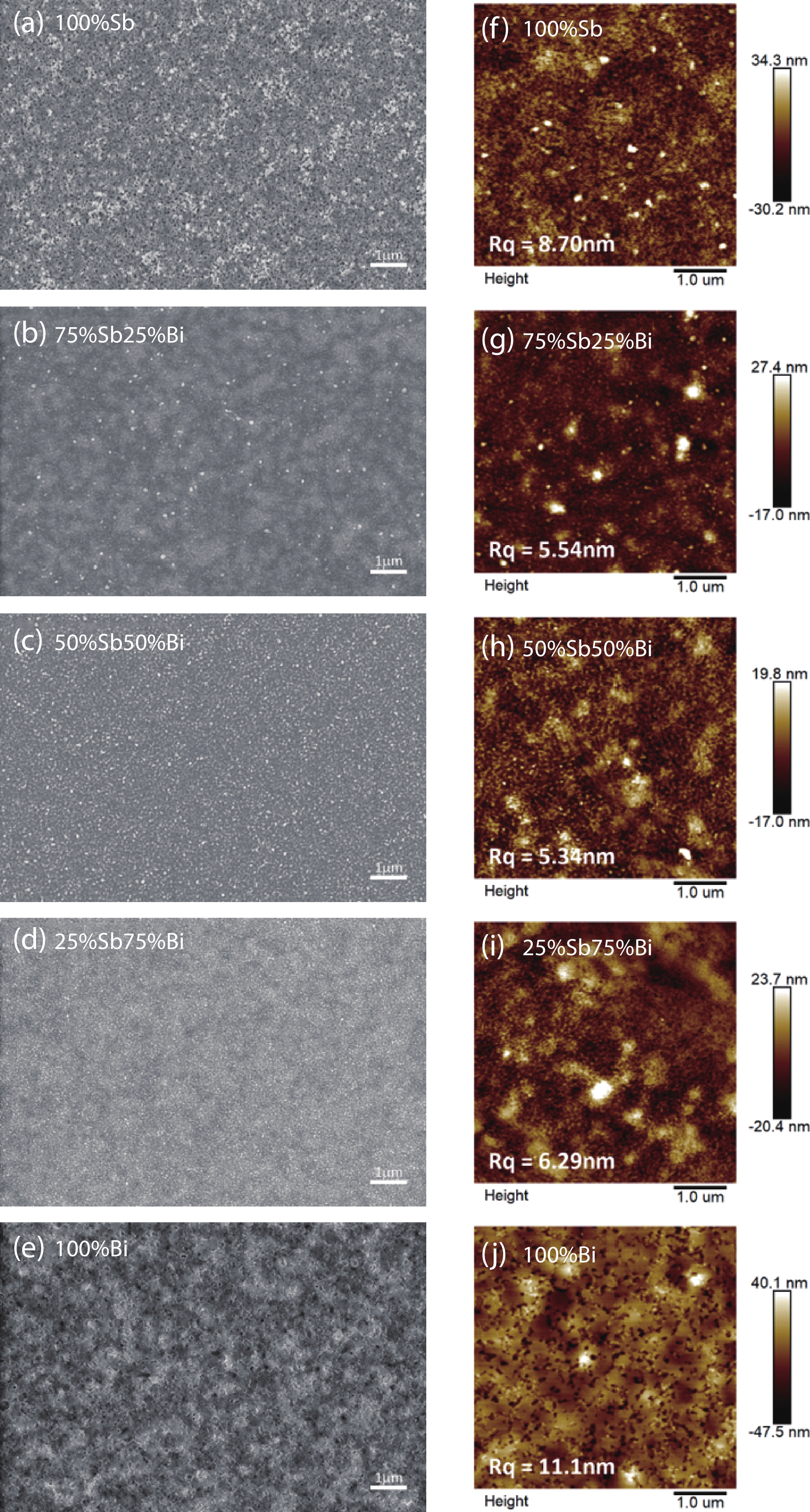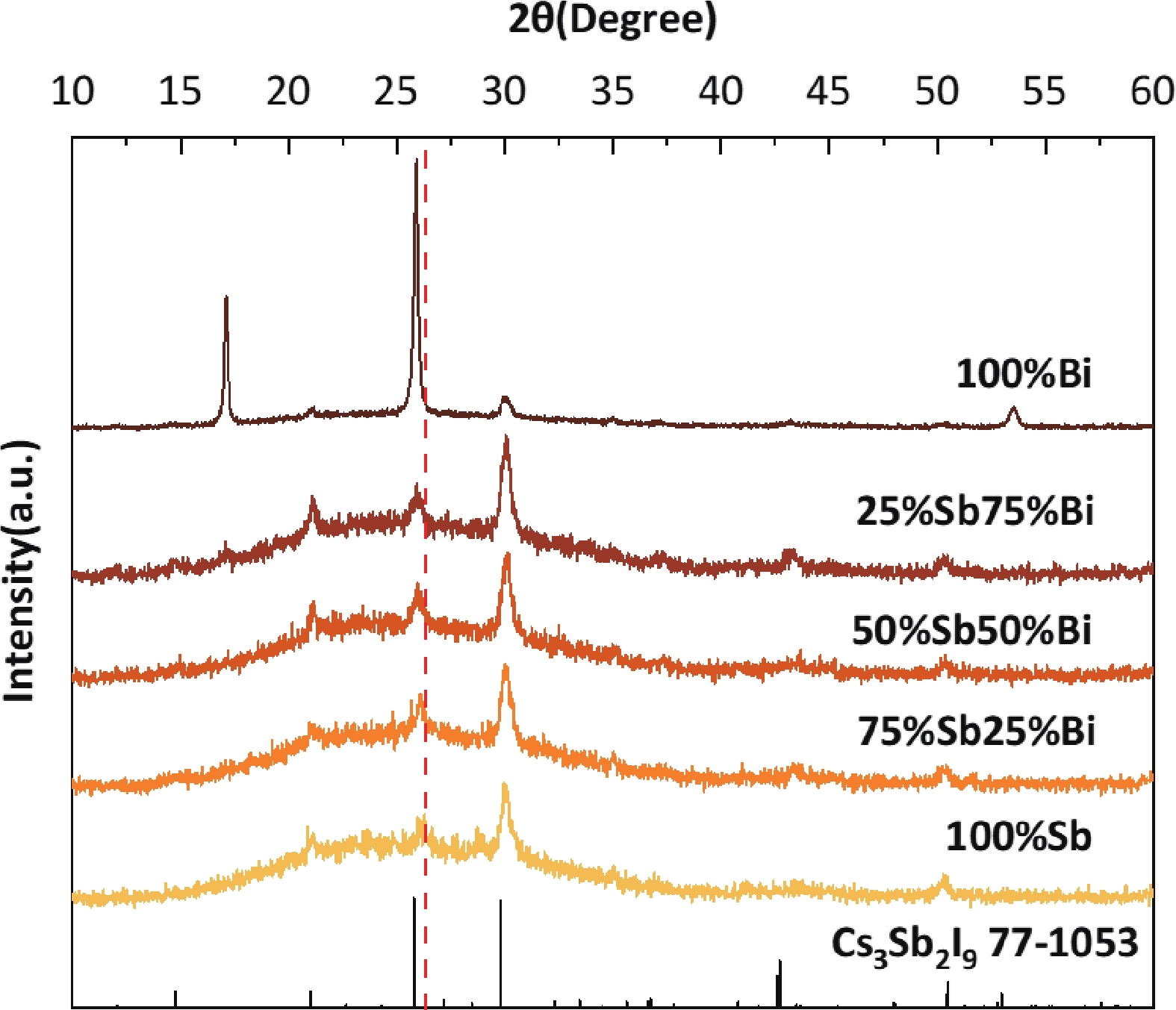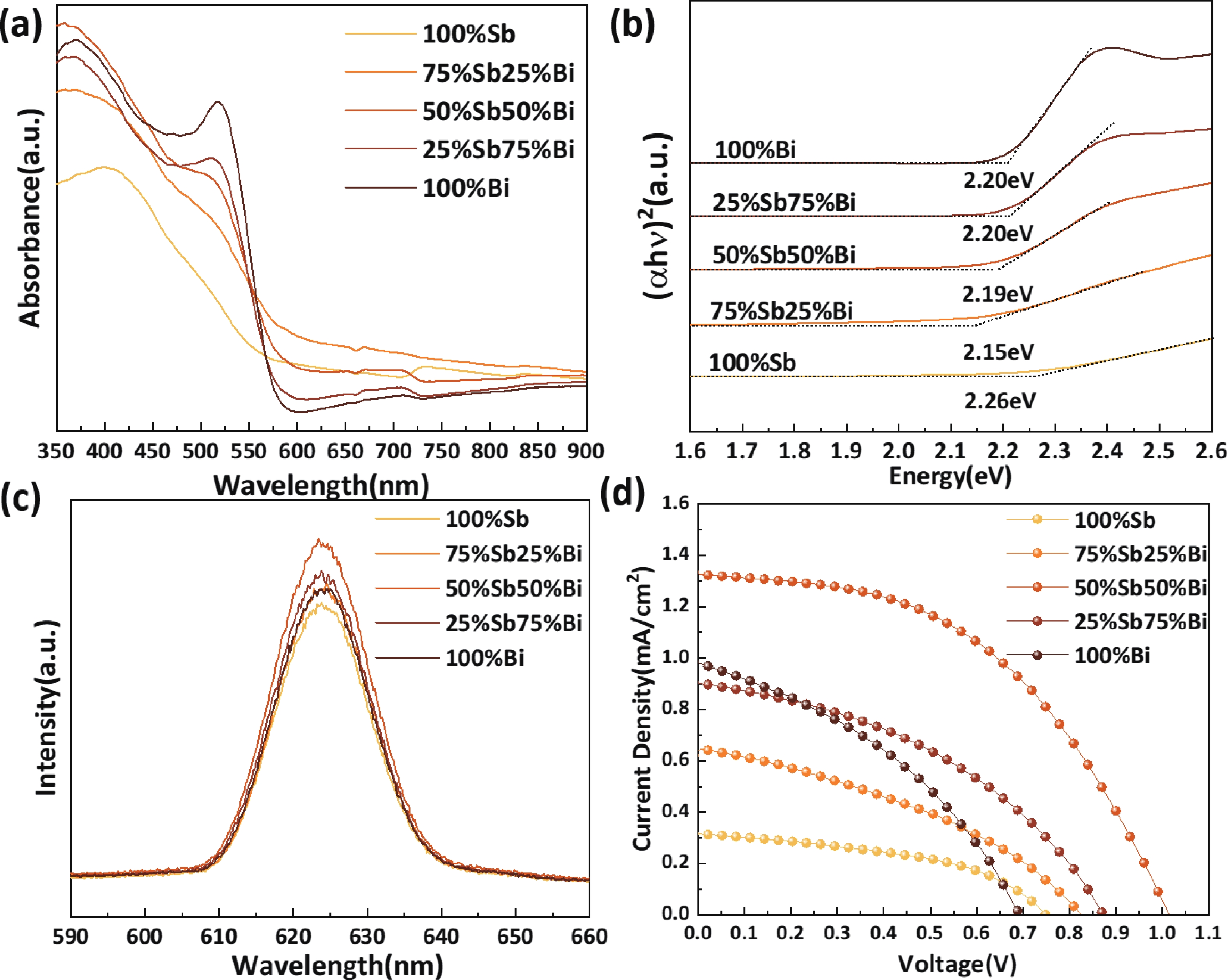| Citation: |
Ziyu Cai, Junchi Zhu, Chenyuan Ding, Tao Dong, Boyang Yu, Wenzheng Hu, Jiayi Xie, Feng Ye, Qiufeng Ye, Zebo Fang. Compositional engineering for lead-free antimony bismuth alloy-based halide perovskite solar cells[J]. Journal of Semiconductors, 2025, 46(5): 052803. doi: 10.1088/1674-4926/24120038
****
Z Y Cai, J C Zhu, C Y Ding, T Dong, B Y Yu, W Z Hu, J Y Xie, F Ye, Q F Ye, and Z B Fang, Compositional engineering for lead-free antimony bismuth alloy-based halide perovskite solar cells[J]. J. Semicond., 2025, 46(5), 052803 doi: 10.1088/1674-4926/24120038
|
Compositional engineering for lead-free antimony bismuth alloy-based halide perovskite solar cells
DOI: 10.1088/1674-4926/24120038
CSTR: 32376.14.1674-4926.24120038
More Information-
Abstract
Owing to their low toxicity and remarkable stability, perovskites based on antimony and bismuth have garnered significant interest in recent years. However, A3B2X9 perovskite materials derived from antimony and bismuth face several challenges, including excessively wide band gaps, elevated defect densities, and suboptimal film quality, all of which hinder advancements in device efficiency. While extensive studies have been undertaken to investigate the effects of modulating the A-site and X-site elements in lead-free A3B2X9 perovskites, there remains a notable scarcity of reports addressing the impact of modifications to the B-site element. In this study, we investigated the alloying of antimony and bismuth within the 2D Cs3B2I6Br3 perovskite. By systematically varying the ratios of two elements, we found that the incorporation of both antimony and bismuth at the B-site significantly enhances the quality of the perovskite films. Our findings indicate that a 1 : 1 ratio of antimony to bismuth produces the densest films, the highest photoluminescence intensity, and superior photovoltaic performance. Ultimately, the devices fabricated using this optimal ratio achieved an open-circuit voltage (VOC) of 1.01 V and a power conversion efficiency (PCE) of 0.645%. -
References
[1] Liang Z, Zhang Y, Xu H F, et al. Homogenizing out-of-plane cation composition in perovskite solar cells. Nature, 2023, 624(7992), 557 doi: 10.1038/s41586-023-06784-0[2] Wang Z H, Han Z Y, Chu X B, et al. Regulation of wide bandgap perovskite by rubidium thiocyanate for efficient silicon/perovskite tandem solar cells. Adv Mater, 2024, 36(50), 2407681 doi: 10.1002/adma.202407681[3] Chin X Y, Turkay D, Steele J A, et al. Interface passivation for 31.25%-efficient perovskite/silicon tandem solar cells. Science, 2023, 381(6653), 59 doi: 10.1126/science.adg0091[4] Park B W, Philippe B, Zhang X L, et al. Bismuth based hybrid perovskites A3Bi2I9 (A: Methylammonium or cesium) for solar cell application. Adv Mater, 2015, 27(43), 6806 doi: 10.1002/adma.201501978[5] Lan C F, Liang G X, Zhao S, et al. Lead-free formamidinium bismuth perovskites (FA)3Bi2I9 with low bandgap for potential photovoltaic application. Sol Energy, 2019, 177, 501 doi: 10.1016/j.solener.2018.11.050[6] Yu B B, Liao M, Yang J X, et al. Alloy-induced phase transition and enhanced photovoltaic performance: The case of Cs3Bi2I9–xBrx perovskite solar cells. J Mater Chem A, 2019, 7(15), 8818 doi: 10.1039/C9TA01978B[7] Harikesh P C, Mulmudi H K, Ghosh B, et al. Rb as an alternative cation for templating inorganic lead-free perovskites for solution processed photovoltaics. Chem Mater, 2016, 28(20), 7496 doi: 10.1021/acs.chemmater.6b03310[8] Jiang F Y, Yang D W, Jiang Y Y, et al. Chlorine-incorporation-induced formation of the layered phase for antimony-based lead-free perovskite solar cells. J Am Chem Soc, 2018, 140(3), 1019 doi: 10.1021/jacs.7b10739[9] Zhang Y F, Liu F Z, Su H H, et al. Controlling the intermediate phase to improve the crystallinity and orientation of Cs3Sb2ClxI9-x films for efficient solar cells. Adv Funct Materials, 2023, 33(40), 2304063 doi: 10.1002/adfm.202304063[10] Bai F, Hu Y H, Hu Y Q, et al. Lead-free, air-stable ultrathin Cs3Bi2I9 perovskite nanosheets for solar cells. Sol Energy Mater Sol Cells, 2018, 184, 15 doi: 10.1016/j.solmat.2018.04.032[11] Umar F, Zhang J, Jin Z X, et al. Dimensionality controlling of Cs3Sb2I9 for efficient all-inorganic planar thin film solar cells by HCl-assisted solution method. Adv Opt Mater, 2019, 7(5), 1801368 doi: 10.1002/adom.201801368[12] Shi M, Fu P, Tian W M, et al. Tuning the optoelectronic property of all-inorganic lead-free perovskite via finely microstructural modulation for photovoltaics. Small Meth, 2024, 8(2), 2300405 doi: 10.1002/smtd.202300405[13] Kang J, Chen S, Hao M M, et al. Alloying Sb into all inorganic lead-free CsBi3I10 for improving the crystal growth and photovoltaic performance. J Mater Chem A, 2022, 10(37), 19618 doi: 10.1039/D2TA02245A[14] Al-Anesi B, Grandhi G K, Pecoraro A, et al. Antimony-bismuth alloying: The key to a major boost in the efficiency of lead-free perovskite-inspired photovoltaics. Small, 2023, 19(46), 2303575 doi: 10.1002/smll.202303575[15] Chen G Q, Wang P, Wu Y Q, et al. Lead-free halide perovskite Cs3Bi2xSb2–2xI9 (x ≈ 0.3) possessing the photocatalytic activity for hydrogen evolution comparable to that of (CH3NH3)PbI3. Adv Mater, 2020, 32(39), 2001344 doi: 10.1002/adma.202001344 -
Proportional views





 Ziyu Cai got his bachelor’s degree in 2017 from Applied Technology College of Soochow University. Currently, he is a master student in School of Mathematics Information of Shaoxing University under the supervision of the Associate Professor Qiufeng Ye. His research focuses on lead-free perovskite solar cells.
Ziyu Cai got his bachelor’s degree in 2017 from Applied Technology College of Soochow University. Currently, he is a master student in School of Mathematics Information of Shaoxing University under the supervision of the Associate Professor Qiufeng Ye. His research focuses on lead-free perovskite solar cells. Qiufeng Ye received his PhD degree from University of Chinese Academy of Sciences (2021). He is currently a Associate Professor of Shaoxing University. His research is mainly focused on perovskite materials and their applications in photovoltaic.
Qiufeng Ye received his PhD degree from University of Chinese Academy of Sciences (2021). He is currently a Associate Professor of Shaoxing University. His research is mainly focused on perovskite materials and their applications in photovoltaic.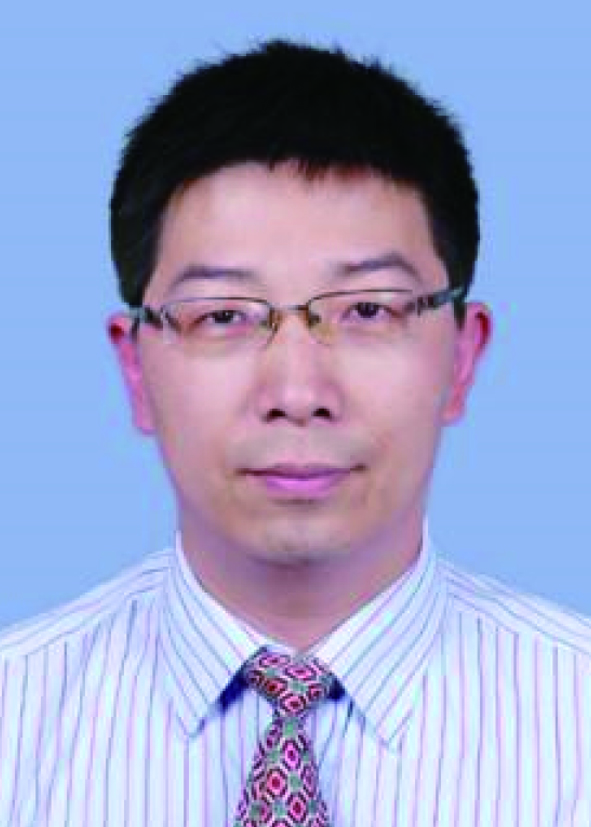 Zebo Fang received his PhD degree from Lanzhou University. He is currently a Professor of Shaoxing University and the Dean of School of Mathematical Information, Shaoxing University. His research is mainly focused on Semiconductor high k materials and optoelectronic devices.
Zebo Fang received his PhD degree from Lanzhou University. He is currently a Professor of Shaoxing University and the Dean of School of Mathematical Information, Shaoxing University. His research is mainly focused on Semiconductor high k materials and optoelectronic devices.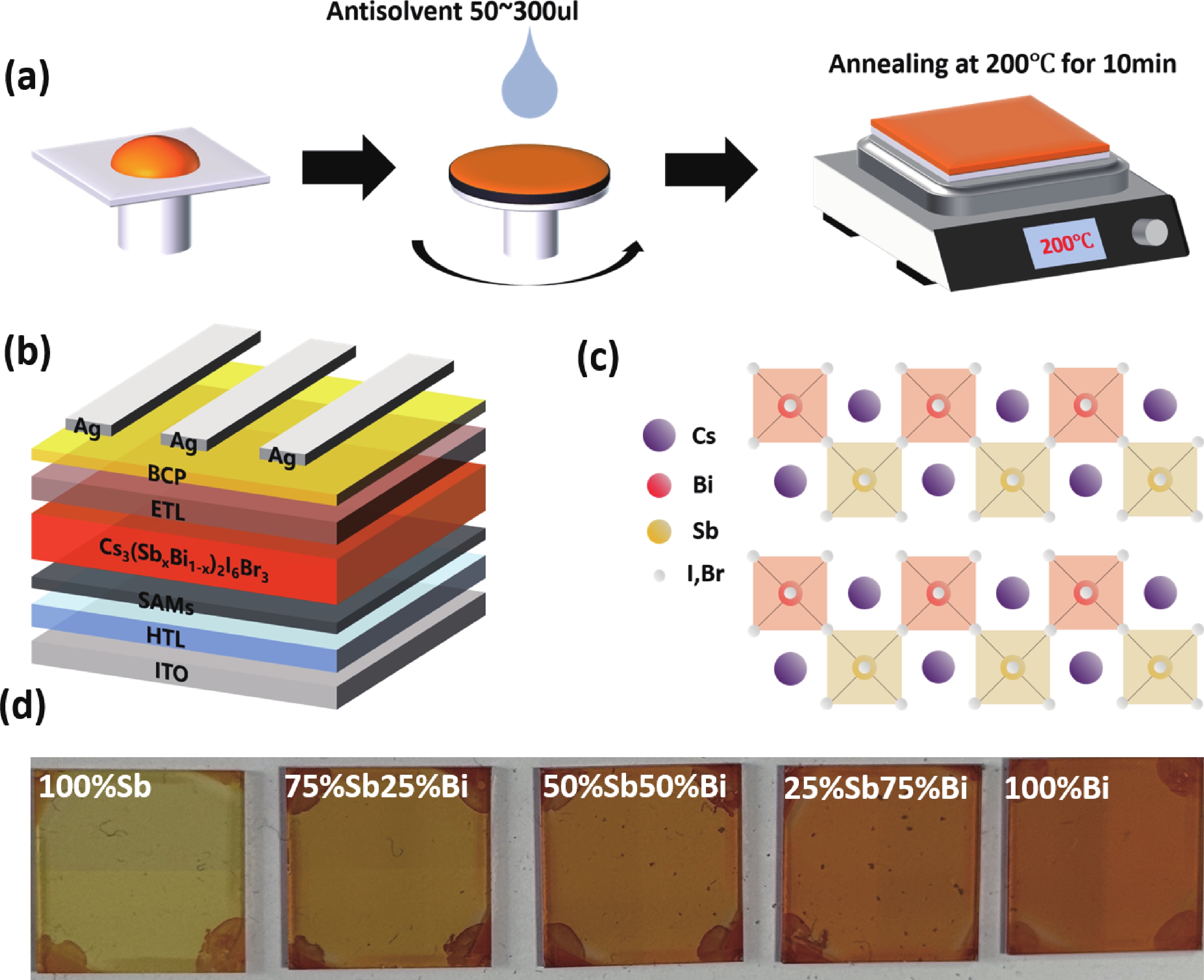
 DownLoad:
DownLoad:
